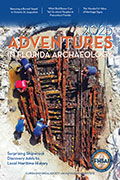Florida Frontiers Articles
Florida Frontiers: The Weekly Newspaper Articles of the Florida Historical Society is a weekly newspaper article covering history-based events, exhibitions, activities, places and people in Florida. The newspaper articles premiered in January 2014. We explore the relevance of Florida history to contemporary society and promote awareness of heritage and culture tourism options in the state.
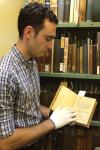
The land that the Spanish called La Florida encompassed the entire region that is now the southeastern United States. While several conquistadors had visited Florida prior to 1539, none were more intrepid explorers than Hernando de Soto.
“De Soto is an interesting character,” says Ben DiBiase, director of educational resources for the Florida Historical Society and archivist at the Library of Florida History in Cocoa. “He gained some notoriety serving with Pizarro in the Central and South American campaigns. He had spent some time in Peru, and became known for his somewhat brutal tactics when dealing with the native populations. He traveled back to Spain in the mid-1530s, and was given permission and a governorship to conquer the lands of what they then referred to as La Florida.... click title or here for the full article

Each year the Brevard Theatrical Ensemble presents a new production of “Mosquitoes, Alligators, and Determination” looking at different aspects of Florida history and culture.
The ninth, all new version of the program will be presented at the Library of Florida History, 435 Brevard Avenue, Cocoa, with performances Friday at 7:30 pm, Saturday at 2:30 pm and Sunday at 2:30 pm, this weekend and next. Tickets are available at a discount online at www.myfloridahistory.org, or by calling 321-690-1971, ext. 205.
“We’re a storytelling group and we do themed shows, and somebody said, ‘we live here in Florida, it’s a great place, but there’s all this history that people don’t know about,’” says Mike Mellen, who has been with the Brevard Theatrical Ensemble for 20 years, and has perf... click title or here for the full article
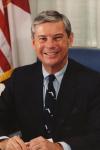
Former Florida Senator Bob Graham co-chaired the congressional inquiry into possible links between the Saudi Arabian government and the 9/11 terrorist attacks, and since 2002 he has wanted the commission’s full report released. Twenty-eight pages had been removed from the document and labeled “classified.”
On July 15, the missing “28 pages” were finally made public.
The newly released document states that, “While in the United States, some of the September 11 hijackers were in contact with, and received support or assistance from, individuals who may be connected to the Saudi Government.”
The report says that the congressional commission was presented with information “indicating that Saudi Government officials in the United States may have other ties to al-Qa’ida a... click title or here for the full article
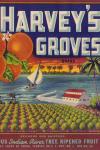
Citrus is as much a part of Florida’s image as sunshine, beaches, and theme parks. Like most Florida residents, citrus trees are transplants from somewhere else.
“Many people don’t realize that citrus is not indigenous to our state,” says Patrisha Meyers, director of the Brevard Museum of History and Natural Science. “Citrus plants were actually brought here by the Spanish in the 1500s.”
Christopher Columbus first brought citrus to the New World in 1493, and Ponce de León was a member of his crew. When Ponce “discovered” Florida in 1513, he was probably one of the first to plant orange trees here. Later sixteenth century Spanish explorers did the same.
Grapefruit didn’t arrive in Florida until about 300 years later. The French Count Odet Philippe planted the first g... click title or here for the full article
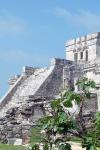
The statewide headquarters of the Florida Historical Society is in Cocoa, but the organization hosts their Annual Meeting and Symposium in a different Florida city each year. In recent years the event has been held in Orlando, St. Augustine, Fort Lauderdale, Tampa, Jacksonville, and Pensacola.
In 2013, to commemorate the 500th anniversary of the naming of our state, the Florida Historical Society hosted their annual meeting aboard a cruise ship that sailed out of Port Canaveral. The return voyage from the Bahamas followed Ponce de León’s path of discovery, sailing up the east coast of Florida.
“That cruise was the most popular conference we’ve ever had,” says Tracy Moore, president of the Florida Historical Society. “We’ve been around since 1856, so that’s really saying so... click title or here for the full article
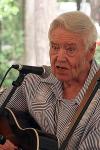
Frank Thomas writes and performs songs about the history, people, and places of Florida. Songs such as “Old Cracker Cowman,” “The Flatwoods of Home,” and “Spanish Gold” have earned him a loyal following. In 2013, Thomas was inducted into the Florida Artists Hall of Fame.
Thomas’s Florida roots run deep.
“The Thomas side of the family came into Florida in 1820,” says Thomas. “He married a girl who was born in St. Augustine in 18 and 5, and her parents was well established there, they’d been there about 20 years, so I’m thinking it had to be late 1780s or early 1790s.”
Members of the Thomas family experienced a lot of Florida history.
“Longevity seems to run in my family,” says Thomas. “My daddy was born in 18 and 82. Now he grew up in a whole different era. No... click title or here for the full article

A powerful hurricane can be terrifying. The darkened skies, howling winds, and pelting rain can be harrowing.
The hurricane of 1928 was particularly devastating to residents of south Florida.
“When you talk about Florida, you have to talk about hurricanes,” says Eliot Kleinberg, author of the book “Black Cloud: The Deadly Hurricane of 1928.”
Kleinberg first heard about the hurricane of 1928 while working as a reporter for the Palm Beach Post. “In 1988, for the sixtieth anniversary of the storm, I was sent out to Belle Glade to cover a commemorative event. The more I talked to these people, I said, how is it possible that this profound hurricane happened and most of the world doesn’t know anything about it?”
The 1928 hurricane played a pivotal role in Zora Nea... click title or here for the full article

Florida has a diverse wealth of geological resources.
People have enjoyed the sands of Florida’s beaches for more than 12,000 years. Prehistoric people in Florida used chert to make weapons and tools. Later indigenous people used clay to create bowls and storage containers.
Coquina rock provided a practical building material for Spanish colonists. The Castillo de San Marcos in St. Augustine was originally constructed in 1672 using coquina and the fort remains undefeated in battle.
The Seminole Indians and runaway slaves sought refuge among the stalactites and stalagmites in the caverns of north Florida.
As early as the late 1800s, automobile races were held on the firm sands of Ormond Beach and Daytona Beach.
Phosphate, used as fertilizer and in some e... click title or here for the full article

As World War II began in 1939, the population of Florida was less than two million people. The population of the state grew exponentially each decade after World War II, and military installations constructed during that conflict were a major factor in that growth.
Daniel Hutchinson is Assistant Professor of History at Belmont Abbey College in North Carolina. His doctoral dissertation at Florida State University was “Military Bases and the Transformation of the Rural South During World War II.”
“During the Great Depression, tourism to Florida really took a very big hit, and with the coming of World War II, many Florida communities that relied on tourism saw military bases as a way to recover,” says Hutchinson. “Hotels, resorts, tourist destinations of all kinds sent letter... click title or here for the full article

A visit to the Marjorie Kinnan Rawlings Historic State Park in the rural community of Cross Creek is like a trip back in time to the 1930s. The home there is furnished just as Rawlings had it when she was writing her Pulitzer Prize winning novel “The Yearling,” her autobiography “Cross Creek,” and other works depicting the lives of Florida Crackers.
Rawlings’s typewriter and notes sit on a table on the front porch, along with her ashtray and a pack of Lucky Strikes cigarettes, as if the writer has just gotten up to get a glass of iced tea from the kitchen.
Each room of the house contains furniture and personal items that belonged to Rawlings or are very similar to what the beloved Florida writer owned.
“She always described it as a rambling farmhouse,” says Carrie T... click title or here for the full article
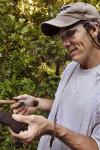
About 1,000 years ago, agricultural communities were established in what would become the Southeastern and Midwestern United States, and what is called the Mississippian culture flourished.
Keith Ashley is an archaeologist and research coordinator at the University of North Florida in Jacksonville. Ashley’s research is demonstrating a link between Native Floridians and the thriving Mississippian culture.
“Mississippian World is a term that we’ve kind of superimposed as archaeologists,” says Ashley. “Basically these were Chieftain level groups, meaning that they had institutionalized inequality. They had chiefs who controlled more than one village. They were involved in intensive maize agriculture. They were involved in these far flung trade and exchange networks, and the... click title or here for the full article
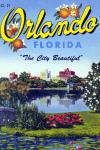
The statewide headquarters of the Florida Historical Society is in Cocoa, but the organization hosts their Annual Meeting and Symposium in a different Florida city each year. In recent years the event has been held in St. Augustine, Fort Lauderdale, Tampa, Jacksonville, and Pensacola.
In 2013, to commemorate the 500th anniversary of the naming of our state, the Florida Historical Society hosted their annual meeting aboard a cruise ship that sailed out of Port Canaveral. The return voyage from the Bahamas followed Ponce de León’s path of discovery, sailing up the east coast of Florida.
This year’s conference will be held at the Embassy Suites by Hilton in downtown Orlando, May 19-21. Hotel and event registration is online at myfloridahistory.org and the public is welcome to... click title or here for the full article

Last week, a conference called “Tracing the Caribbean Footprints of Zora Neale Hurston: A 125th Birthday Commemorative Cruise” was held aboard the cruise ship Freedom of the Seas, with private tours in Haiti and Jamaica.
The conference cruise was sponsored by the Association to Preserve the Eatonville Community. That organization is dedicated to the preservation of the oldest incorporated African American municipality in the United States and the memory of its most famous resident, writer, folklorist, and anthropologist Zora Neale Hurston.
Hurston visited Haiti in 1936, where she immersed herself in the local culture, including the practice and documentation of the religion of Voodoo.
She claimed to have taken a seven week break from her anthropological work to writ... click title or here for the full article

The American Civil War divided the country between the industrialized northern states and the agricultural southern states that depended upon slave labor to support their economy.
Disagreement over the issue of whether or not individual states had the right to decide if slavery should be legal within their borders led to the War Between the States.
Florida was the third state to secede from the Union, in January 1861, behind only South Carolina and Mississippi. As the largest supplier of beef and salt to the Confederate army, Florida played a vital role in the Civil War.
For those interested in learning more about this conflict, the Rossetter House Museum and Gardens in Eau Gallie is hosting “Civil War Living History Day” on Saturday, April 16, from 10 am to 4 pm. A... click title or here for the full article

The Apalachee tribe lived in Florida’s Panhandle, and by the 1500s they had developed a sophisticated culture with farming villages and ceremonial centers. Anhaica, the Apalachee capital, was located near present day Tallahassee.
The Apalachee were part of an extensive trade network that extended north to the Great Lakes and west to present day Oklahoma. The Florida tribe would trade shells, shark’s teeth, and smoked fish for copper, mica, and other minerals not found in their native land.
“They were known by Indian tribes in south Florida and elsewhere as rich and powerful, and a lot of it had to do with the location here in the red hills of Tallahassee,” says Karin Stanford, program supervisor at Mission San Luis Living History Museum.
“The soil is extremely good... click title or here for the full article

Historical Archaeologist Kathleen Deagan led a series of excavations that identified the original encampment of Pedro Menéndez de Avilés from 1565.
From that encampment, the city of St. Augustine was established as the oldest continuously occupied European settlement in what is now the United States.
“We began that project in the 1970s, thinking we were going to be studying an Indian village,” says Deagan, Distinguished Research Curator and Professor Emerita from the University of Florida.
“Over the years as our sample became larger, we realized ‘wait a minute. This isn’t like anything we’ve ever seen in a Native American town.’ Square buildings made with nails. We found a barrel well made of white Spanish oak filled with mid-16th century Spanish artifacts. We reali... click title or here for the full article

The possibility of Florida producing its first U.S. president in the current political season is suspended along with the campaigns of Marco Rubio and Jeb Bush.
Florida is one of a handful of “swing states” that helps to determine the outcome of our presidential elections. In recent decades, Florida’s 29 Electoral College votes have gone to both Democratic and Republican candidates, making the difference between victory and defeat for both political parties in national races for president.
As important as Florida has become to our presidential election process, there has never been a president, or even a vice-president, from Florida.
“Florida is the largest state in the Union to have never had a president,” says James C. Clark, author of the book Presidents in Flori... click title or here for the full article
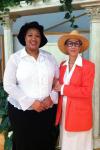
The Florida Historical Society is presenting the original theatrical production “Female Florida: Historic Women in Their Own Words,” Sunday at 2:00 pm at the Rossetter House Museum and Gardens in Eau Gallie.
The production was created using oral histories and autobiographical writings by businesswoman Caroline P. Rossetter, writer Zora Neale Hurston, environmentalist Marjory Stoneman Douglas, and educator Mary McLeod Bethune.
Rossetter and Douglas are being portrayed by Marion C. Marsh. Hurston and Bethune are played by Jossalynn Moukouanga. Both Marsh and Moukouanga are professional actresses from Orlando.
The Rossetter House Museum and Gardens is a particularly appropriate place to perform “Female Florida,” as Caroline P. Rossetter was the last resident of the hom... click title or here for the full article
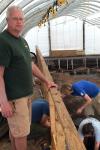
More than a century after prehistoric human remains were discovered among the bones of extinct animals in Vero Beach, new archaeological discoveries are being made in the same location.
The site’s lead archaeologist, Andy Hemmings, will give a presentation called “The Old Vero Site: Recent Work and its Place on the Paleoindian Landscape of Florida,” Saturday, March 19, at 3:00 pm, at the Library of Florida History in Cocoa.
When a large drainage ditch was dug in Vero in 1913, the bones of prehistoric animals such as mammoth, mastodon, extinct horses, and giant armadillo were discovered. Two years later, as naturalist Frank Ayers walked along the banks of the canal, he noticed what appeared to be a human skull protruding from the dirt.
Ayers quickly went to get his f... click title or here for the full article

Gotha, Germany, has existed since the Middle Ages. Charlemagne, who united most of Western Europe, mentioned the town in a document he signed in the year 775.
The small community of Gotha, Florida, was officially designated on April 20, 1885. The town is located in Orange County, between Ocoee and Windermere.
While living in Buffalo, New York in 1878, German printer Henry Hempel invented and patented a printing tool that revolutionized the way that pages were set up for printing. With new wealth earned from his invention, Hempel decided to create a German colony in Florida.
Hempel came to Central Florida in 1879, and began purchasing land. By 1883, he had acquired 1,000 acres where he created a town plat. He named the colony after his hometown in Germany, and invite... click title or here for the full article

In early 1965, cartoonist, filmmaker, and visionary entrepreneur Walt Disney began quietly purchasing large tracts of land in Central Florida.
Inspired by the success of his theme park Disneyland in Anaheim, California, Disney wanted to develop his original idea more fully by creating an expansive vacation destination on America’s east coast. Attracted by Florida’s temperate climate and already established tourist trade, Disney decided to build his new “Magic Kingdom” in the center of the state, near Orlando.
By October 1965, Disney had acquired nearly 43 square miles of Central Florida land. Nearby residents speculated wildly that a huge industrial plant or some secret government installation was being built in their backyard.
The following month, Disney held a pre... click title or here for the full article

Mother Laura Adorkor Kofi was assassinated on March 28, 1928, while giving a speech at Thompson’s Hall in Miami. Many in the audience believed that Kofi was a divine prophet sent by God to liberate African Americans and black people around the world.
“She said that she had a revelation to liberate African American people, to take them on the right course, back to the Promised Land, Africa, and to create an independent community, a cultural, independent community,” says Vibert White, author of an essay on Kofi in the book Africa in Florida: Five Hundred Years of African Presence in the Sunshine State.
Kofi came to America in the early 1920s from West Africa, and quickly became part of the Black Nationalist movement. She joined Marcus Garvey’s Universal Negro Improvement Ass... click title or here for the full article

This weekend, residents of Brevard County can celebrate and learn about the people who lived here before us.
The fifth annual Pioneer Day will be held Saturday at the Sams House in the Pine Island Conservation Area, and at St. Luke’s Episcopal Church on North Tropical Trail, Merritt Island. A shuttle will run from 10 am to 4 pm between the two locations.
Pioneer Day is hosted by the Pine Island Preservation Society and will feature presentations about our area’s prehistoric people, craft vendors, educational displays, children’s games, music, and food.
The Pine Island Conservation Area covers more than 900 acres and is jointly owned by the Environmentally Endangered Lands Program and the St. Johns Water Management District. Archaeological excavations of the area hav... click title or here for the full article
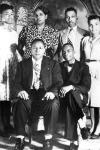
February is Black History Month.
A new exhibit at the Brevard Museum of History and Natural Science in Cocoa is recognizing the accomplishments of two internationally known Floridians with strong local ties.
On display are panels featuring rare photographs, letters, and information about educator, activist, and civil rights martyr Harry T. Moore; and writer, folklorist, and anthropologist Zora Neale Hurston. A video component produced by the Florida Historical Society includes commentary from scholars and oral history interviews with friends and relatives.
On Christmas night 1951, a bomb exploded under the Mims home of Harry T. Moore. The blast was so loud it could be heard several miles away in Titusville.
Moore died while being transported to Sanford, the c... click title or here for the full article







